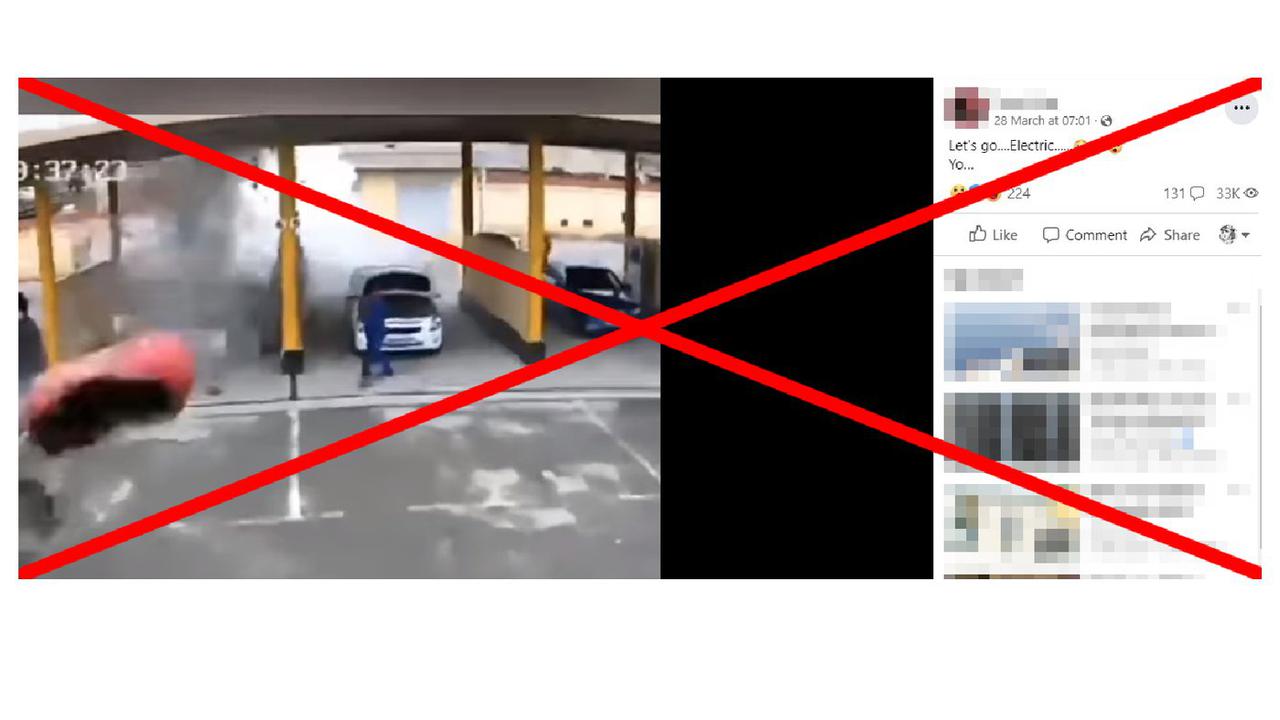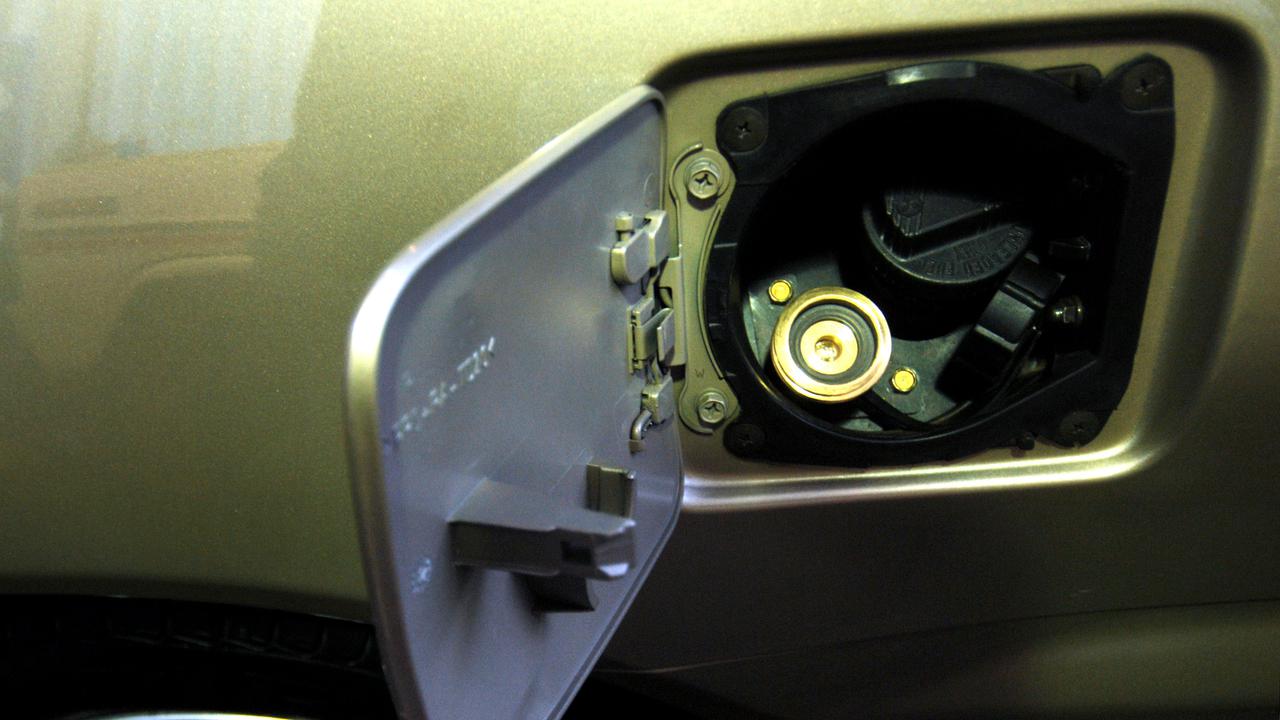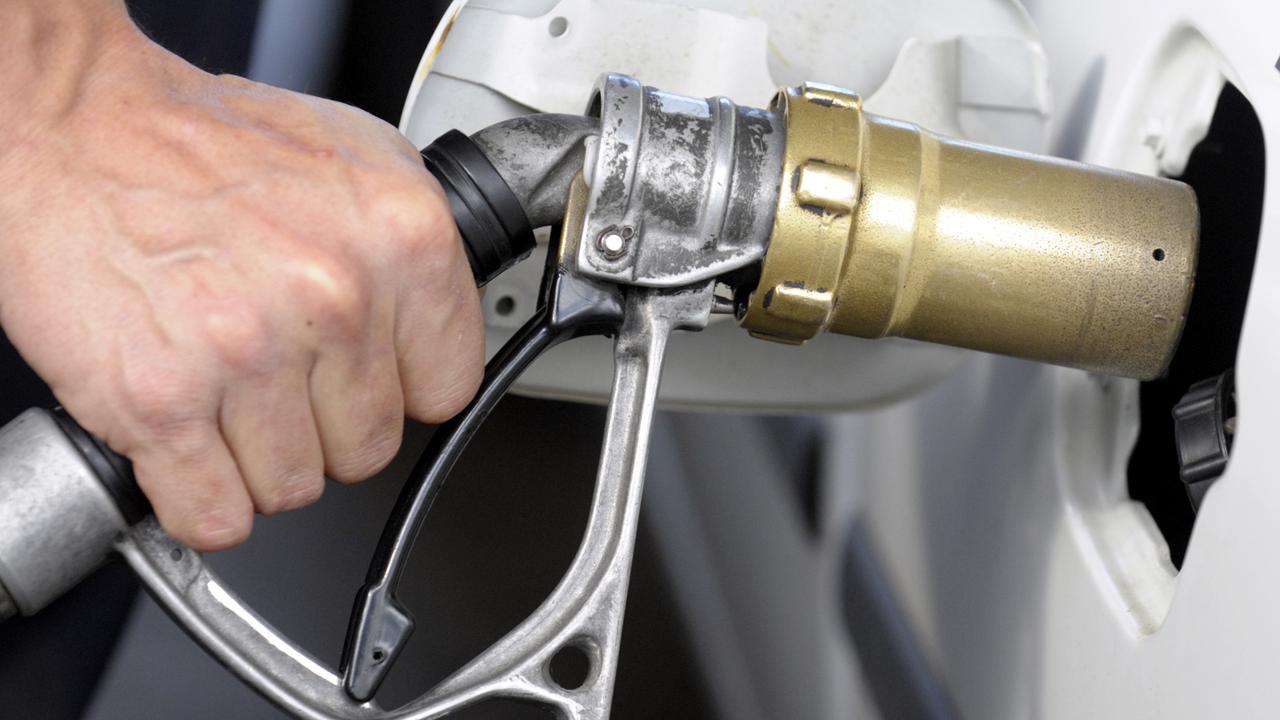WHAT WAS CLAIMED
A video shows an electric vehicle exploding.
OUR VERDICT
False. The car was fuelled by compressed natural gas and the blast appears to have been caused by an exploding gas canister.
A video clip of an exploding car is being shared on social media to question the safety of electric vehicle batteries.
However, claims the video shows an electric car are false. The vehicle in the clip was fuelled by compressed natural gas (CNG). A CNG canister is clearly seen in the video.
Local authorities in the Central Asian nation of Uzbekistan, where the incident took place, also posted a photo of the burst CNG canister to Facebook.
There is no evidence the explosion had any relation to electric vehicles.
A Facebook statement from the local branch of Uzbekistan's emergency services department says the blast occurred on February 25, 2023, while a CNG-powered vehicle was refuelling in the city of Samarkand.
The dramatic nine-second clip shows a parked white car suddenly exploding, with a red canister flying towards the camera before bouncing back and fatally hitting a person nearby.
* Warning - the video contains graphic footage some viewers may find distressing.
Social media users have shared the clip along with comments suggesting the blast was caused by an electric car battery, as seen here, here, here, here, here, here and here.

AAP FactCheck has translated the full statement from the Samarkand Regional Emergency Department into English here.
"In the city of Samarkand, a gas cylinder installed in the 'NEXIA 3' car burst today, on February 25, at 11:30 am while filling compressed gas (methane) into a gas cylinder," the statement reads.
It said the person killed in the incident was a gas station employee.
The statement was accompanied on Facebook by a photo of a broken CNG canister retrieved after the blast which appears to match the canister ejected from the car in the explosion.
The incident was also reported on news sites in Uzbekistan, see here and here.
CNG vehicles use internal-combustion engines modified to run off a methane-rich mixture of natural gas.
CNG-powered cars are common in Uzbekistan, where hundreds of thousands of cars have reportedly been converted to run on compressed gas.
This video shows the installation of CNG canisters in the car boot space of a vehicle in Uzbekistan (video mark 1min 22sec).

Uzbekistan's notable preference for CNG-fuelled cars is described in this 2021 blog post by Patrick Powers, a US resident who lived in Uzbekistan as part of his Fulbright scholarship.
"In Uzbekistan, they fill their cars up with gas. Not gasoline, but gas. More specifically, compressed natural gas (CNG) or liquified petroleum gas (LPG)," Mr Powers wrote in the blog post.
"Moreover, cars in Uzbekistan are not manufactured to run on CNG. Rather, a conversion is done after the car is purchased to allow it to run on the alternative fuel."
An International Energy Agency report shows Uzbekistan's ministry of transport said half of all cars and trucks in the nation ran on CNG, as of early 2019 (page 44).
By comparison, local media reported Uzbekistan had imported only a few thousand EVs into the country by September 2022.
Mr Powers said in his blog post that he believed many CNG conversions were dangerous due to "shoddy parts, unsafe installation technique, or both".
"All of this means that topping off the tank is significantly riskier in Uzbekistan than in most of the world," he wrote.

The Institute for War and Peace Reporting (IWPR), an international journalism advocacy charity, said in a 2010 briefing note that many vehicles in Uzbekistan were converted to CNG as a cheap alternative to petrol and diesel.
"Conversions to CNG became popular in the mid-Nineties because petrol was in short supply, and was of poor quality even when it was available. In later years, high petrol prices further encouraged the trend," the IWPR briefing notes.
"Experts believe most CNG conversions have been carried out without the required safety certification."
CNG vehicle explosions appear to be a regular occurrence in Uzbekistan.
AAP FactCheck found numerous reports of CNG-powered cars exploding in Uzbekistan in recent years, including here, here, here, here, here and here.
The Verdict
Claims a video shows an electric vehicle exploding in Uzbekistan are false.
Uzbek authorities said the vehicle was being refuelled with compressed natural gas at the time. The video clearly shows a gas canister being ejected from the car. There is no evidence the car in the video was an electric vehicle.
False - The claim is inaccurate.
AAP FactCheck is an accredited member of the International Fact-Checking Network. To keep up with our latest fact checks, follow us on Facebook, Twitter and Instagram.












